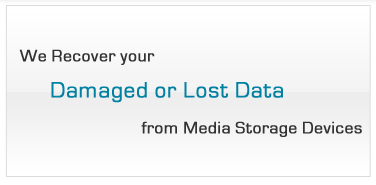RAID array is formed by set of several hard drives. Different techniques are used in combining two or more drives, which are expressed as RAID levels or RAID configurations. You can save large volume of data by using different RAID levels. In some cases the RAID arrays can fail due to logical or physical reasons. The data loss conditions and recovery methods are different for different RAID levels. Geeksnerds provides reliable server recovery services for all levels of RAID arrays. Our engineers have expertise in recovering data from RAID arrays. We can recover data from all types of storage devices including RAID, NAS, SAN and DAS devices.
We have expertise of data recovery from following RAID levels:
- RAID 0
- RAID 1
- RAID 4
- RAID 5
- RAID 6
- RAID 10
- RAID 50
In RAID 0, data is divided in blocks, and it is written on the drives in RAID array. You can save a large amount of data and use all storage capacity of disk forming a RAID 0 but there is risk of data loss as there is no redundancy or fault tolerance. RAID 0 provides better data transfer speed and storage capacity. RAID 0 data is divided into blocks and these blocks are written on different disks.
RAID 1 is the method of mirroring disks. Stored data on one set of hard drives has its mirror on another set of drives. If one set of the drives fails, you can access data present on mirror but in some cases, where all the mirrors get corrupt, data can be lost.
In RAID 4, blocks of independent data disks are made with shared parity disk. In case where one drive fails, RAID data can be recovered but where the disk having parity information fails, then data becomes inaccessible. RAID 4 is similar to RAID 5 but in RAID 4 parity information is present on only one of the disks.
RAID 5 is made with distributed parity blocks in each set of hard drives with independent read and write operations. Data chunks are also larger. Drive failure cases can affect the output and data rebuild condition becomes complicated. RAID 5 is considered as reliable due to redundancy. Single drive failure degrades the performance and if more than one drive fails then RAID array breaks resulting in data loss.
In RAID 6, two independent parity blocks are used to provide security against data loss. The parity information is present on two disks providing tolerance up to two hard drives failure. The RAID 6 array works with up to two drive failures but where more than 2 drives fail, the array fails.
RAID 10 is created with the segments of RAID1 + 0 .i.e with the combination of mirroring and striping.
In RAID 50, two RAID 5 sets are combined with the RAID 0 .i.e striping across both the sets of RAID 5 array.
We recover lost data in almost all situations of RAID Sever failure including:
- RAID controller failure
- RAID array corrupt
- Configuration failure
- Hard drive failure, single or multiple drives
Geeksnerds expert recovery engineers restore data from all RAID levels including RAID 0, RAID 1, RAID 5, RAID 6, RAID 6E or RAID 50. If you have data loss situation, you can send or bring in the drives at our data recovery labs for in-lab recovery. Special RAID data recovery operations are performed using advanced tools by our specialists.




